Santana and colorful houses in Madeira - access, parking, sightseeing
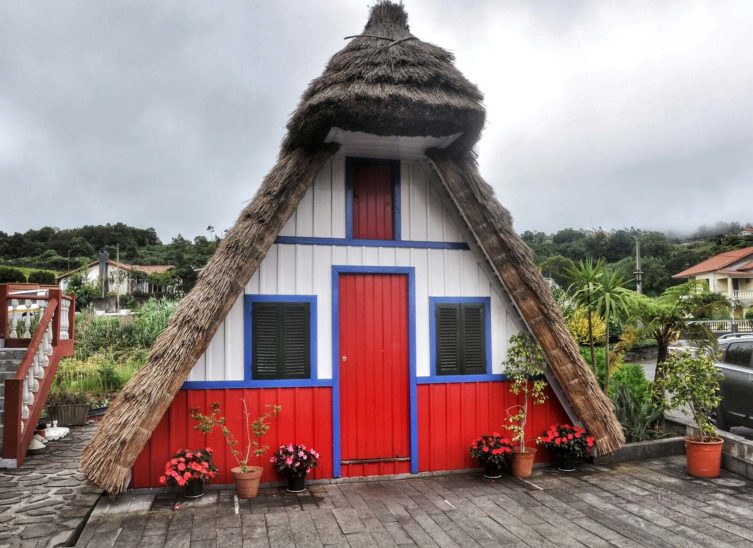
Colorful houses in Madeira
It's hard to deny the beauty of the triangular houses in the town of Santana. The combination of several bright colors always attracts attention. They look great in photos and work great on postcards. Due to their distinctive appearance, they quickly became popular. Today (despite the fact that there are only a few of them here), almost all tourists coming to the island visit the "houses of Santana".
A few myths to debunk
It is commonly believed that this is what the traditional houses built on the island looked like. Of course, this is generally true, although several myths have arisen as a result of the development of tourist traffic around the houses. Kind of like a "dead phone". Information passed on and slightly modified by subsequent people, with time becomes completely different information and has less and less to do with what was at the beginning.
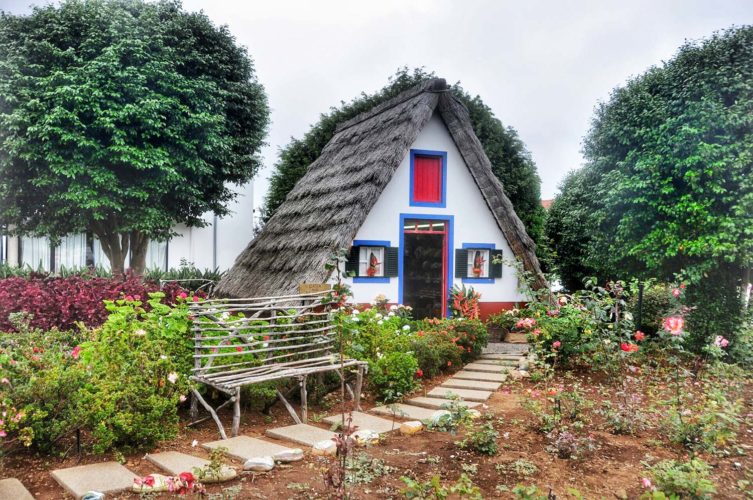
Some pages say that the houses come from the "discovery of Madeira", but this is of course not true. The discovery of Madeira is attributed to three Portuguese (Joao Goncalves Zarco, Tristao Vaz Teixeira and Bartolomeu Perestrelo). It took place in 1418 and was a coincidence. A violent storm pushed them (happily) to the tiny island of Porto Santo adjacent to Madeira. The view from the position of the small and almost "bald" desert island of Porto Santo made the densely overgrown Madeira, seen by them, gain its name. The word "madeira" in Portuguese means wood. The island was then christened Ilha Madeira, which can be neatly translated as the Wooded Island.
At the time of its discovery, Madeira was not inhabited, so it is obvious that there could not be any houses on it. So the cottages in Santana do not come from the discovery of the island. They were built later. The first ones were created not earlier than in the XNUMXth century, when the Portuguese settled the island.
Another picturesque story that appears often concerns the selection of materials for the construction of a house. It is often reported that the wooden walls were designed to protect against the winter cold, and were whitewashed to minimize the effects of summer heat. Similarly, the thatched roof: insulated against the cold in winter and protected against heat in summer.
And everything would be great, if it were not for the fact that in the areas where there was a settlement, i.e. mainly in the coastal regions of the island, in the coldest month of the year (February) the temperature drops to 14 degrees Celsius at night (during the day in February it is 20 degrees Celsius). So you can risk the thesis that it is rather moderate cold, and the wood was chosen for a different, more prosaic reason.
The same goes for summer. The temperature during the day, in the warmest month (August), is 26 degrees Celsius. So I wonder from what heat was the thick thatched roof and whitewashed walls to protect against?
By the way, I will only add that the climate in Madeira is probably the friendliest you can imagine. There is no winter and autumn here, and only summer and spring intertwine throughout the year.
For more details about the weather in Madeira, see a separate post: Madeira - long-term weather. When to go? Air, water and climate temperature
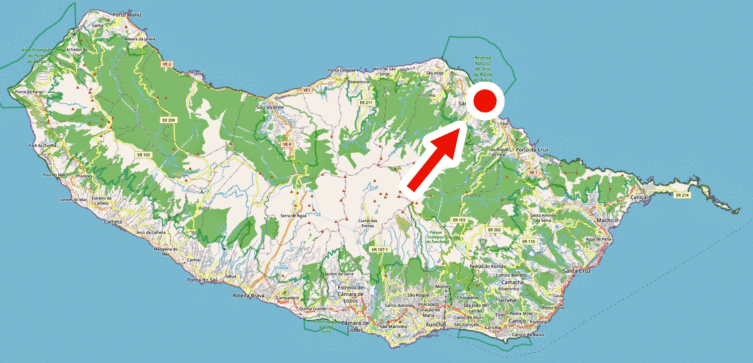
Cottages in Santana
The houses you will see in Santana are not very old (not even 100 years old). Although the first structures of this type were built during the settlement of the island in the XNUMXth century, none of them has survived to this day.
They were built of wood, because the wood on the island was a cheap material, easily available and obtained in large amounts during the clearing of land for settlement. On the other hand, straw obtained basically for free from cereal crops did an excellent job of protecting against rain. It was naturally suitable for the quick construction of cheap houses by settlers.
Most of the houses on the island were not colorful. While traveling around the island, you will probably also come across such non-colorful versions. It is even enough to take a short walk in Santana to see a few of them. Only a few were colored. The colors of the houses in Santana reflect the most common traditional painting.
The interior of the cottage was usually organized so that the ground floor was mainly occupied by a living room separated from the kitchen by a wall, and agricultural products were stored in the attic room.
In addition to the houses you will see in Santana, houses built on a log floor (Rasteiras type houses) were also built on a basalt stone substructure (called Meio Fio). They were significantly larger and usually consisted of a living room and two bedrooms on the ground floor, utility rooms and another bedroom on the first floor, and a room for storing seeds in the attic. However, stone was definitely a more difficult-to-access building material and much less such houses were built on the island.
Both types of houses were thatched, which had to be replaced every three years.
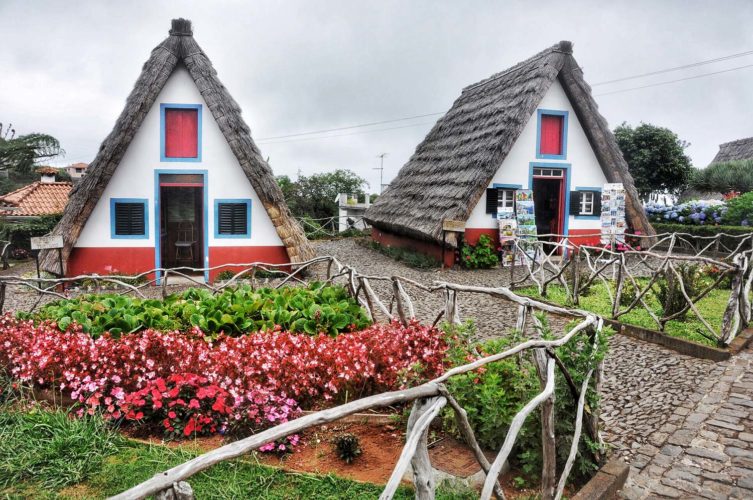
Is it worth going?
As I wrote in the first words of this text, it is difficult to argue with the beauty of the houses in Santana. Even though there are only a few of them, surrounded by ubiquitous flowers, they make a really great impression and it's hard not to take a photo with them. At the same time, they are so characteristic that omitting Santana while exploring the island would be a big mistake.
I recommend Santana for a short sightseeing tour, a nice stop to stretch your legs and as a perfect place for beautiful, colorful, commemorative photos from the "island of eternal spring".
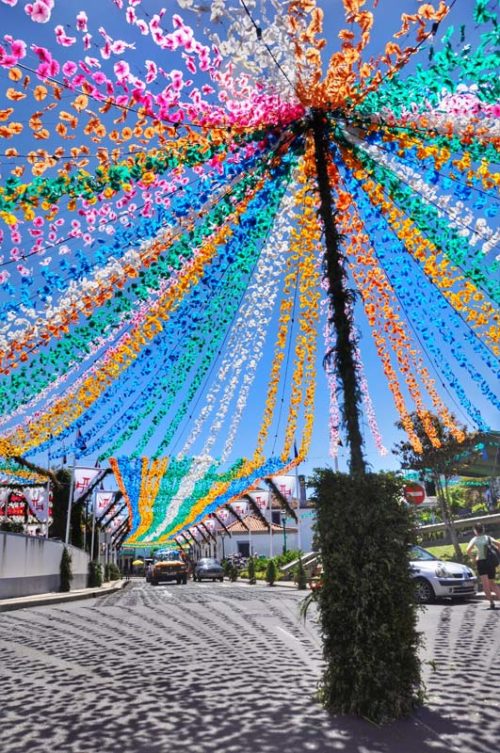
By the way, it is worth taking a short walk around the town, especially when you're around on August 15th (feast of the Assumption of the Blessed Virgin Mary). The town is then decorated with ubiquitous decorations, and the streets look beautiful.
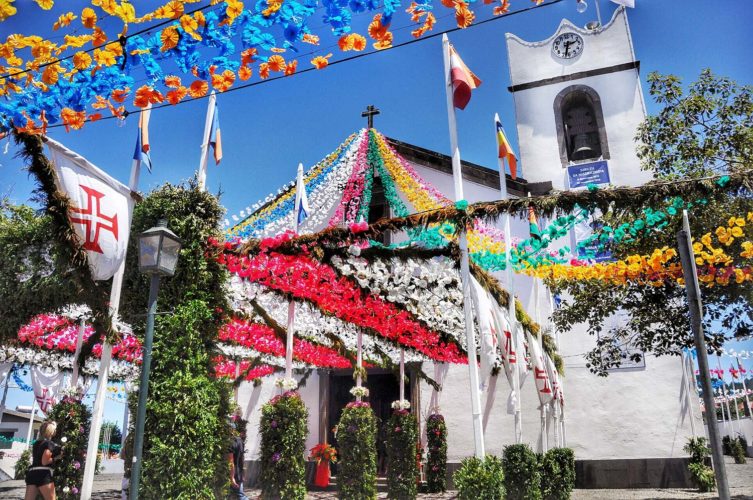
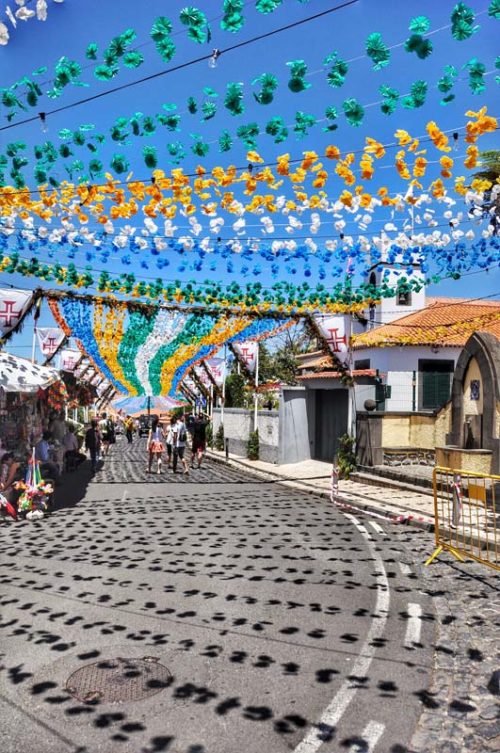
Useful GPS coordinates
Below you will find the coordinates of the parking lot located next to the houses (literally several dozen meters from them). If there is no room here, you have to wander around town. It's not big, so you won't have to look far.
Colorful houses in Santana, GPS coordinates:
32°48’19.4″N 16°52’57.4″W
32.805396, -16.882604 - click and route
Parking at the houses in Santana, GPS coordinates:
32°48’18.3″N 16°52’58.3″W
32.805082, -16.882865 - click and route
Santana - hotels and accommodation
Madeira is a very graceful island, perfect for traveling alone. If you are going to explore Madeira on your own, consider the option of living in several places along the route of your sightseeing, instead of one fixed departure point. Hotels located in the interior of the island are often cheaper, and sometimes fabulously located. By the way, you do not waste time on unnecessary trips back and forth to the place of accommodation. This is a really great option.
Here you'll find link to hotels located in the town of Santana and in its vicinity - [click].
The link I prepared filters the search results so that it shows the ones closest to Santana at the top of the list.
In addition, below I present a few proposals selected by me. Pay particular attention to the first one! It is an offer of accommodation in houses that look like traditional Santana houses, but with a standard suitable for a pleasant vacation. The cottages are located close to the entrances to some walking routes along the Madeiran levadas. Many people staying in them are very pleased with it. It is true that an interesting option?
Santana Houses by Madeira Experience - [click]
Santana in Nature Bed & Breakfast - [click]
Monte Mar Palace Hotel - [click]
Madeira sightseeing itinerary
This entry is part of a complete one Madeira sightseeing plan - [click]. The guide contains plans, maps and descriptions of specific sightseeing routes.To see all currently available descriptions of attractions in Madeira, click on the link: Madeira - [click].
Safe car rental guide: Madeira - car rental without deposit?
Important to me!
Give the article a good rating (5 stars welcome 😀)!It's free, a for me it is very important! The blog lives on visits and thus has a chance to develop. Please do it and ... thank you in advance!
If you like my guides, you will certainly find the one I created useful guide catalog - [click]. There you will find ready-made ideas for your next trips, descriptions of other tourist destinations and an alphabetical list of guides divided into countries, cities, islands and geographical regions.
I also post link to Facebook profile - [click]. Come in and press "Follow"then you will not miss new, inspiring posts.
Unless you prefer Instagram. I'm not a social media demon, but you can always count on something nice to look at on my instagram profile - [click]. The profile will gladly accept any follower who likes it.
I make the content I create available free of charge with copyright, and the blog survives from advertising and affiliate cooperation. So, automatic ads will be displayed in the content of the articles, and some links are affiliate links. This has no effect on the final price of the service or product, but I may earn a commission for displaying ads or following certain links. I only recommend services and products that I find good and helpful. Since the beginning of the blog's existence, I have not published any sponsored article.
Some of the readers who found the information here very helpful, sometimes ask me how you can support the blog? I do not run fundraisers or support programs (type: patronite, zrzutka or "buy coffee"). The best way is to use links. It costs you nothing, and support for the blog is self-generating.
Pozdrawiam

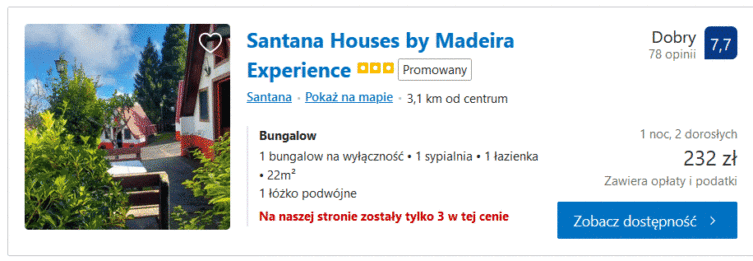
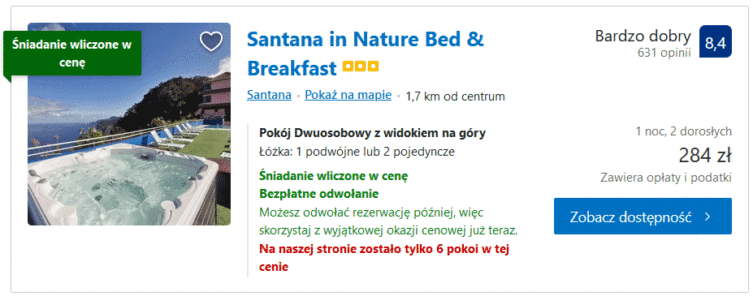
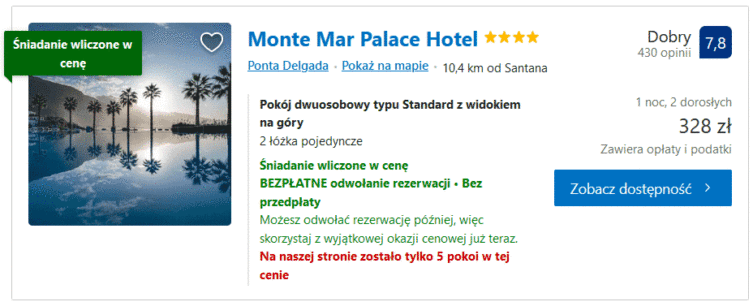
We were here in February 2023. The parking lot indicated by Jacek was full, but we stood alongside the parked cars, of course not preventing them from leaving. We weren't the only ones who did this, we didn't get a ticket. The colorful houses are very photogenic, but they are more of a tourist attraction. I was rather disappointed by this attraction.